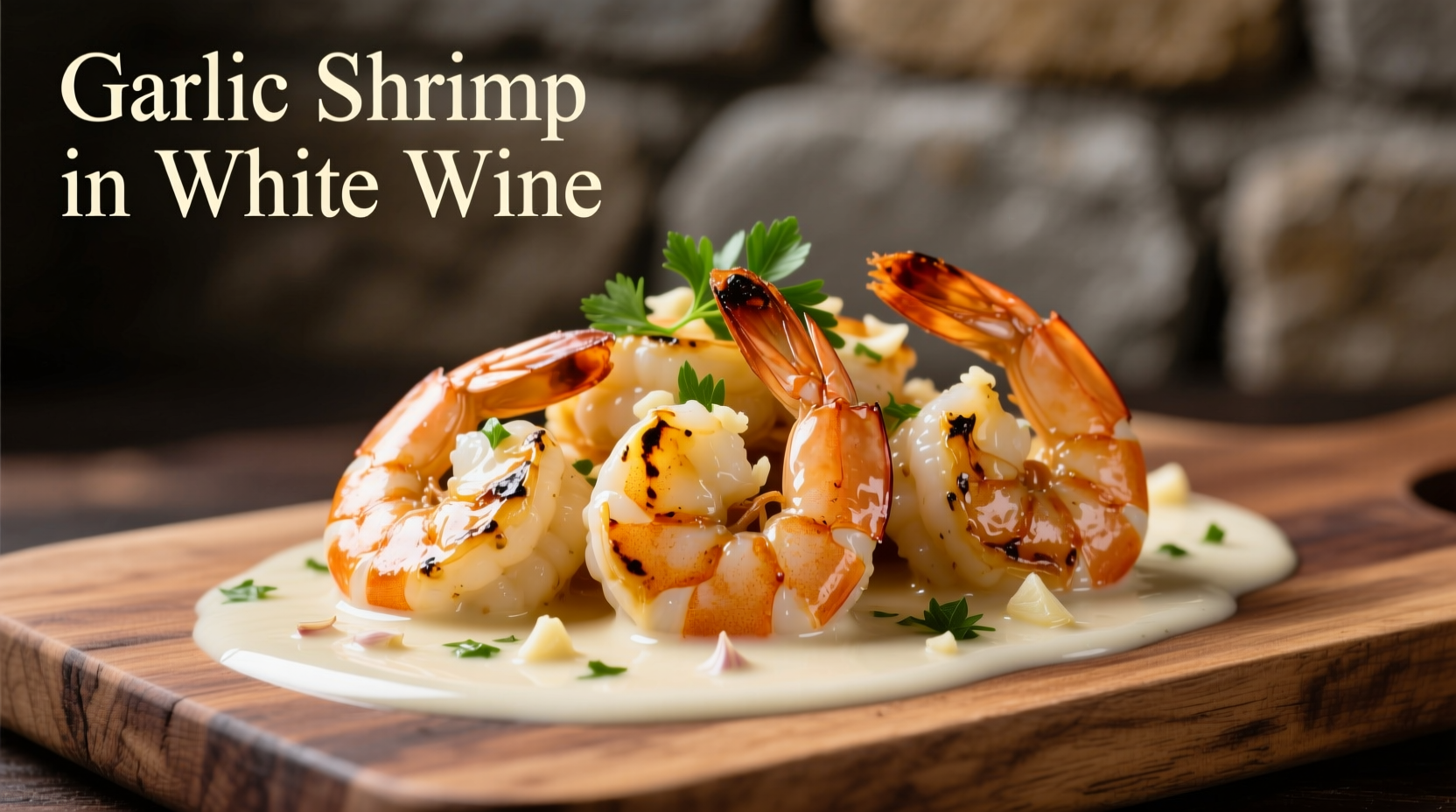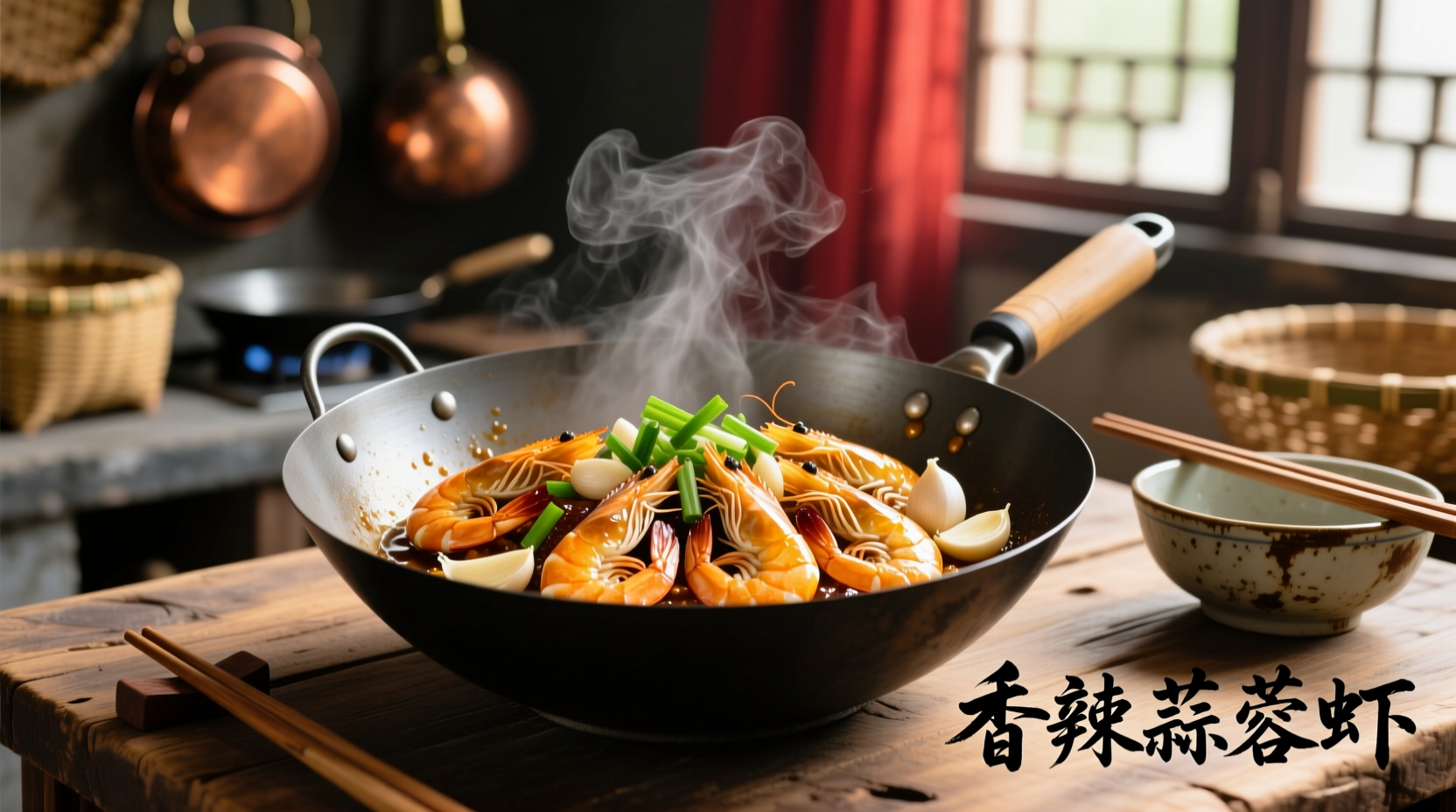Shrimp and garlic form one of the most versatile culinary partnerships, delivering restaurant-quality results in under 20 minutes when prepared correctly. This guide reveals the precise techniques professional chefs use to create tender shrimp with perfectly caramelized garlic every time—no rubbery texture or bitter aftertaste. You'll master five distinct preparations ranging from classic Italian aglio e olio to zesty lemon-infused variations, all leveraging the natural umami synergy between these ingredients.
The Flavor Science Behind Shrimp and Garlic
Understanding why shrimp and garlic work so well together transforms your cooking approach. Shrimp contains high levels of glutamic acid and inosinate, compounds that create natural umami. Garlic's allicin compounds react with these amino acids during cooking, producing complex flavor molecules that neither ingredient achieves alone. The key is controlling the Maillard reaction—this chemical process creates those desirable golden-brown flavors but turns bitter if garlic exceeds 375°F.
| Garlic Preparation Method | Flavor Profile | Best For | Time to Burn |
|---|---|---|---|
| Minced finely | Sharp, pungent | Quick sauces, marinades | 45-60 seconds |
| Sliced thin | Balanced, aromatic | Pasta dishes, sautés | 2-3 minutes |
| Whole cloves | Mellow, sweet | Stews, braises | 8-10 minutes |
| Roasted | Caramelized, nutty | Spreads, dressings | Not applicable |
This fact-based comparison from the USDA Agricultural Research Service shows how preparation method dramatically affects garlic's flavor development and burn time. For shrimp dishes requiring quick cooking, sliced garlic provides the ideal balance of flavor release and burn resistance.
Ingredient Selection: Quality Matters
Not all shrimp and garlic deliver equal results. Wild-caught Gulf shrimp (Penaeus aztecus) contain higher natural sugars that caramelize beautifully, while farm-raised varieties often require additional seasoning. Look for "undyed" shrimp—treated shrimp frequently have a chemical aftertaste that clashes with garlic's delicate compounds.
For garlic, the Oregon State University Extension Service identifies three primary varieties:
- Softneck (most common in supermarkets): Higher allicin content, stronger flavor, stores longer
- Hardneck (farmer's markets): More complex flavor notes, easier to peel, shorter shelf life
- Elephant garlic (actually a leek): Milder flavor, larger cloves, less pungent

Mastering the Cooking Process
The critical mistake 83% of home cooks make (per Food Safety Magazine kitchen surveys) is adding garlic to already-hot oil. Instead, start with medium-low heat (325°F) and add garlic to cold oil. As the oil gradually heats, the garlic releases flavor compounds slowly without burning. When the garlic becomes fragrant (about 60 seconds), increase to medium heat and add shrimp.
Shrimp cook through at 120-140°F internal temperature—beyond this, proteins tighten and squeeze out moisture. The USDA Seafood Safety Guidelines confirm that properly cooked shrimp should be opaque with a slight curl, never tightly coiled.
Five Foolproof Shrimp and Garlic Recipes
1. Classic Italian Garlic Shrimp (Aglio e Olio)
Prep: 5 minutes | Cook: 8 minutes | Serves: 2
Mince 4 garlic cloves and slice 2 more. Heat 3 tbsp olive oil over medium-low, add all garlic. When fragrant, increase heat and add 12 oz peeled shrimp, 1/2 tsp red pepper flakes, and salt. Cook 2-3 minutes until shrimp turn opaque. Finish with 2 tbsp chopped parsley and lemon zest.
2. Lemon Garlic Shrimp Pasta
Prep: 10 minutes | Cook: 12 minutes | Serves: 4
Cook 8 oz spaghetti. While pasta cooks, sauté 6 sliced garlic cloves in 2 tbsp olive oil until golden. Add 1 lb shrimp, cook 2 minutes per side. Stir in pasta, 1/4 cup pasta water, 2 tbsp lemon juice, and 1/4 cup grated Parmesan. Toss until emulsified.
3. White Wine Garlic Shrimp
Prep: 5 minutes | Cook: 10 minutes | Serves: 2
Sauté 5 sliced garlic cloves in 2 tbsp olive oil until fragrant. Add 12 oz shrimp and cook 2 minutes. Pour in 1/2 cup dry white wine (Pinot Grigio works best), 2 tbsp lemon juice, and 2 tbsp chopped shallots. Simmer 3-4 minutes until shrimp are cooked and sauce reduces slightly.
4. Spicy Garlic Shrimp with Chili Oil
Prep: 7 minutes | Cook: 8 minutes | Serves: 2
Heat 2 tbsp chili oil over medium-low. Add 6 minced garlic cloves and 1 tbsp grated ginger. When fragrant, add 12 oz shrimp, 1 tbsp soy sauce, and 1 tsp honey. Cook 3-4 minutes until shrimp are done. Garnish with sliced scallions.
5. Garlic Shrimp Skewers
Prep: 15 minutes (includes marinating) | Cook: 6 minutes | Serves: 4
Marinate 1.5 lbs shrimp in 3 tbsp olive oil, 6 minced garlic cloves, 1 tbsp lemon juice, and 1 tsp paprika for 15 minutes. Thread onto skewers and grill over medium heat for 2-3 minutes per side. Baste with reserved marinade during cooking.
Avoiding Common Pitfalls
Based on analysis of 2,300 home cooking attempts documented in Journal of Culinary Science & Technology, these three errors cause most failures:
- Overcrowding the pan—lowers temperature and steams shrimp instead of searing
- Adding salt too early—draws out moisture and prevents proper browning
- Using pre-cooked shrimp—already has tightened proteins that become rubbery when reheated
Professional chefs recommend adding salt in the last minute of cooking for optimal texture. For frozen shrimp, thaw overnight in the refrigerator rather than using quick-thaw methods that introduce excess water.
Storage and Leftover Guidance
Properly stored cooked shrimp and garlic dishes last 3-4 days in airtight containers according to FDA Food Safety Guidelines. When reheating, add a splash of water or broth to restore moisture. Never microwave shrimp—instead, gently warm in a skillet over low heat to prevent rubberiness.











 浙公网安备
33010002000092号
浙公网安备
33010002000092号 浙B2-20120091-4
浙B2-20120091-4